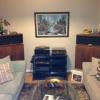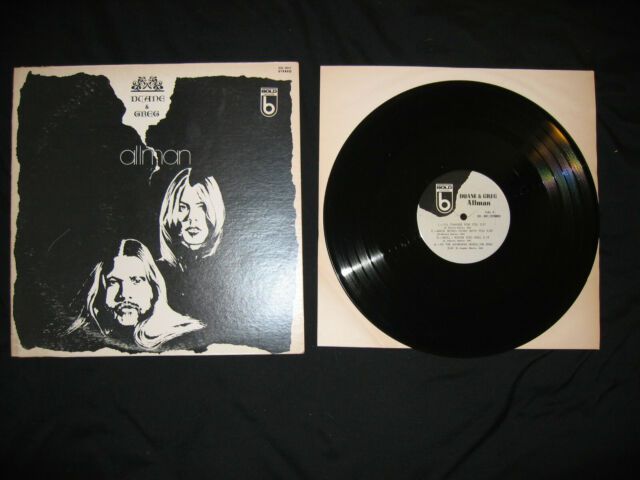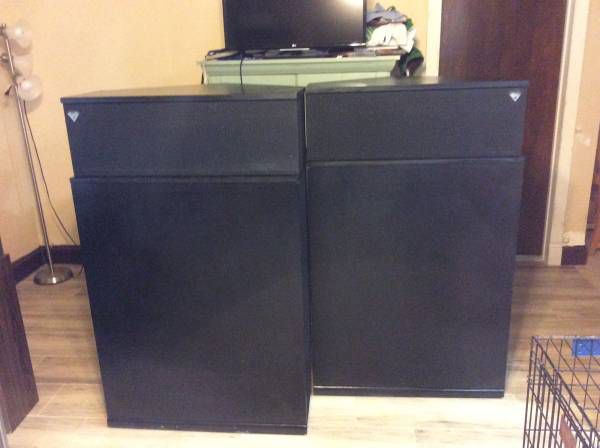-
Posts
219 -
Joined
-
Last visited
Content Type
Forums
Events
Gallery
Everything posted by RickFL
-
Picked a great estate sale in WPB mostly vintage jazz and classical recordings and a few rock records including this Allmans lp on the Bold label out of FL which i am currently listing to. Interesting version of Mellisa.
-
I decided to leave the crossover alone and to first install Crites TI tweeter diaphrams in my Chorus II speakers. I was so happy with that alone that i will wait on the crossover rebuild.
-
Just listening to Milton Naciamento. Such beauty and joy in his song:
-
Wow suspenders and a belt. He is not taking any chances!
-
-
Best caption wins [Edit: There was no Klipsch, strike one; it was a Copyright violation, strike two] Picture removed
-
Royal Palm Beach 33411
-
bump
-
Absolutely not mine. Check this out: https://treasure.craigslist.org/ele/d/fort-pierce-audible-fart-exquisite/7208363847.html
-
bump
-
Bump
-
Thank you!
-
-
-
-
love the Atmos clock as well.
-
Record price? Not mine. https://www.ebay.com/itm/KLIPSCH-SPEAKER-PAIR-FORTE-I-THE-ORIGINAL-WALNUT-ONE-OWNER-SIGNED-LABEL-/264774993242?_trksid=p2385738.m4383.l4275.c10
-
There are those as well
-
See if you can spot the Klipsch Heresy speakers. Lots of cool mid century stuff too. https://estatesales.org/estate-sales/fl/lake-mary/32746/midcentury-estate-salelake-maryestate-sales-1822983
-

Paradigm Studio 100 V2 Black Ash Speaker Pair Mint South Florida $650.
RickFL replied to RickFL's topic in Garage Sale
Price reduced to $650. -
Amazing Paradigm Studio 100 V2 Black Speakers. Condition is mint and sounds perfect. Price dropped to $650. Located in West Palm Beach Florida. Come demo and help me thin the herd prior to our move. Please see the Stereophile review and specifications: Description and Design At first glance, the Reference Studio/100 v.2 seems to be merely a mild cosmetic upgrade of the original Studio/100, reviewed by Tom Norton. The enclosure's side walls are now curved, and there are a couple of pieces of plastic trim. The speaker is still a ported three-way, and its drivers look much the same. But there's much more to the "v.2" designation than meets the eye. The speaker has gained 23 lbs—its new, 110-lb heft reflects changes in cabinet construction. Previously, there was one vertical brace, interlocking with three horizontal braces; now there are a second and third vertical brace for added strength. The midrange enclosure used to be a section of the cabinet partitioned off from the rest; now it's a separate MDF chamber attached only to the front baffle, providing better isolation from the woofer. The thickness of the side walls remains the same at ¾" but the grille thickness was changed from ½" to 5/8" to improve the tweeter's dispersion in the lower part of its range. The tweeter itself has been reworked, with new damping material, a thicker sealing plate for the damping chamber, and a slightly altered magnet structure. The midrange driver has undergone a major re-design. The magnet weight was doubled, improving efficiency and reducing distortion. The voice-coil's diameter has been changed from 1" to 1.5", but the coil still weighs the same because of the use of copper-clad aluminum wire. High-gauss, low-viscosity ferrofluid was added to the midrange driver. Only the woofer was left unchanged; still, its tuning was adjusted slightly through changes in damping material and a 2" increase in port length. The crossover is still a simple quasi-Butterworth design, with the same crossover frequencies, but almost everything else about it is different. In particular, the midrange crossover is all new, both high- and low-pass sections being revised to take into account off-axis measurements. Similarly, the tweeter high-pass was changed to blend better with the midrange, both on- and off-axis. The crossover's physical layout has been changed, with the midrange and tweeter filters moved to the top of the cabinet and the woofer filter to the bottom, reducing interference between the circuits. The crossover's inductors and resistors are much larger and are now placed farther apart for optimal cooling, and the quality of components is higher. Despite all these changes, which represent substantial costs in development time as well as materials, the price of the Studio/100 v.2 is only $100 higher than its predecessor's—a testament to Paradigm's vertical integration of manufacturing. Setup The Reference Studio/100 v.2s turned out to be exceptionally unfussy to set up. I plunked them down in what is my more-or-less standard position: along the long wall of my 16' by 14' by 7.5' listening room. With a bit of tweaking, I had the speakers form an angle of about 70 degrees from the listening seat, with the front of the speaker out about 40" from the back wall and the tweeter about 35" from the side wall. Toe-in was not critical; I aimed speakers almost—but not quite—at the listening seat. Once I was satisfied with the basic setup, I installed the spikes and locknuts. The speaker is provided with four spikes, which are hidden by what look like gold-plated feet but are actually large locknuts. The Studio/100 v.2's five-way binding posts appear to be the same as the ones that Tom Norton complained about: able to be tightened only by hand and too thick for many audiophile spade lugs, they still worked fine with the Nordost bananas that I use. Paradigm recommends biwiring, and that's how I listened to the Studio/100 v.2s. The grille is an integral part of the front-baffle design, so it's intended to be left on; I listened to the speaker with the grille off just long enough to confirm that the sound was, indeed, better focused with the grille on. I used both solid-state (Bryston 9B-THX and Thule PA-250B) and tube (Balanced Audio Technology VK-60) power amplifiers; although all the amplifier-speaker combinations worked well, the Bryston gave the best overall results, keeping the bass under control while providing a clean top end. Paradigm recommends a break-in period of about 50 hours; indeed, the sound had become more open and relaxed after about that long. Sound According to Scott Bagby, head of Paradigm's design team, designing the Reference Studio/100 v.2 was, to a large extent, a process of elimination. The extensive measurements and listening tests were aimed at identifying problem areas, measurable and/or audible, in the speaker's behavior, with changes then made to reduce or eliminate these problems. Presumably, if you eliminate all the unwanted resonances and colorations, what remains is a speaker that just reproduces the input rather than having a sound of its own. That's pretty much what I heard when I listened to the Studio/100 v.2. In my experience, every speaker has some sort of distinctive sonic character that becomes evident sooner or later, but I had a difficult time getting a sense of the Studio/100 v.2's. Its top-to-bottom tonal balance was exceptionally even, with no part of the spectrum given undue prominence. The midrange, in particular, had a most pleasing neutrality, which allowed the distinctive quality of voices and instruments to be preserved. The treble was not quite as silky-smooth and airy as that of the $10k/pair Vienna Acoustics Mahler (see my review in the April 2000 Stereophile), but was at least on a par with such topnotch competitors in its own price range as the Hales Revelation Three ($2195, reviewed in February 1998, Vol.21 No.2), and beat the Hales in the avoidance of sizzle at high levels. In his review of the original Studio/100, Tom Norton noted an occasional edge in the mid-treble; this seems to have been tamed in the v.2. Vocal sibilants—which I find to be the most revealing indicator of problems in a speaker's treble response—were presented cleanly, without exaggeration or noticeable softening. The top end was even sweeter when the speaker was driven by the Balanced Audio Technology VK-60 tube amp, at the cost of some loss of bass control. The Studio/100 v.2's bass performance was also first-rate: extended and powerful, the quality of the bass approaching that of the $7995/pair Dunlavy SC-IV/A, which has dual 10" woofers in a much larger cabinet. The Studio/100 v.2 had no trouble coping with my usual bass test pieces. The synthesizer note at the beginning of track 7 of Mickey Hart's Planet Drum (Rykodisc RC-10206) energized the air most convincingly, and bass drums had proper weight. My listening room's acoustics seem to interact in unpredictable ways with speakers that have extended bass response: with some (eg, the Dunlavy SC-IV/A), the bass is quite smooth; with others (eg, the Vienna Acoustics Mahler), I've had audible peaks and/or suckouts, even when—as in the case of the Mahler—independent quasi-anechoic measurements indicated no problem in the speaker's bass response. My room's interaction with the Studio/100 v.2 was fortuitous: bass extended to the mid-20Hz range, and what I know to be the room's 50Hz standing wave was not noticeable as such. Although there are still audiophile speakers that sound comfortable only up to moderate levels, one of the more positive effects of the advent of home theater has been that most speaker manufacturers are developing products capable of higher SPLs, even when the speaker is designed primarily for stereo use, as is the Studio/100 v.2. (The word from Paradigm is that more than half of the Studio/100s sold end up in home-theater systems.) The Studio/100 v.2 not only sounded good at low to moderate levels, but maintained its composure at levels where most speakers sound strained. Assuming that the amplifier is up to the task (the best amplifier I had on hand for high-level listening was the Thule PA-250B in its 250Wpc stereo mode), turning up the volume—within reason—resulted in the Studio/100 v.2 just playing louder, but without audibly compressing or acquiring a hard edge. If anything, the speaker sounded a bit reticent at lower levels, becoming more lively when supplied more power. At high levels, the Studio/100 v.2 sounded more comfortable than the Dunlavy SC-IV/A or the Hales Revelation Three. Among products of my recent acquaintance, the only speaker that outpointed it in this respect was the Vienna Acoustics Mahler. As far as soundstaging and overall transparency went, the Studio/100 v.2s made a good showing without being in the very top class. Their soundstage was wide and deep (when the recording had this information), and the sound had a generally open quality, seeming to originate in space rather than being confined to the speakers. The Dunlavy SC-IV/As give even greater specificity and three-dimensionality to images within the soundfield, but the differences are fairly small—and the gap in price is wide. Listening position was less critical than with the Dunlavy and other speakers that specialize in pinpoint imaging, with a good semblance of a soundstage being evident even when I listened considerably off-center. Prior to my experience with the Reference Studio/100 v.2, the best speaker I had encountered in this price range was the Hales Revelation Three. I still hold the Revelation Three in high regard, but now I'd have to say that the Studio/100 v.2 offered a somewhat different but equivalent set of virtues. Both speakers are exceedingly neutral in tonal balance, the Paradigm perhaps even more than the Hales. (That is, if memory serves; I didn't have the Hales around for comparison.) The Hales can sound a bit sizzly on top when driven hard, a problem avoided by the Paradigm; in fact, the Paradigm generally sounded more comfortable than the Hales at high levels. However, I remember the Hales as having a somewhat more immediate, more dramatic presentation at moderate levels than the Paradigm, which could sound a bit polite and reticent at these levels. The Paradigm pulled ahead in the low bass, which had greater weight and extension. I'd have a tough time choosing between these speakers. I strongly advise anyone considering the Hales Revelation Three to also give a good listen to the Paradigm Reference Studio/100 v.2—and vice versa. Conclusions Audiophiles can be a snobbish lot, prone to select products on the basis of exclusivity and prestige rather than just performance. Paradigm speakers are widely available, and most of them are relatively inexpensive, which could lead some audiophiles to dismiss the Reference Studio/100 v.2 out of hand as a high-end contender. Nor is the Studio/100 v.2's perceived audiophile credibility helped by the fact that dealers tend to demonstrate it with moderately priced electronics. But Paradigm's Studio/100 v.2 is most certainly a serious high-end contender, and a formidable one for just about any speaker in its price range and even well above. While the Studio/100 v.2 is forgiving of less-than-pristine electronics, it benefits from being combined with a topnotch digital source, electronics, and cables. Although I didn't have a pair of the original Studio/100s available for comparison, there is every indication that the v.2 represents a significant improvement over the speaker that had Tom Norton asking—rhetorically—whether it was the best speaker in its price range. As Tom noted, this question is impossible to answer, given the number of speakers out there, and given that the definition of what's "best" is inevitably complicated by individual preferences about the importance of different sonic attributes. But if tonal neutrality is at the top of your list of priorities for speaker performance, and you want a speaker that can play loud without sounding stressed, then you really must listen to the Reference Studio/100 v.2. You may well decide that it is, indeed, the best speaker in its price range. Description: Three-way, four-driver, floorstanding, reflex-loaded loudspeaker. Drive-units: 1" aluminum-dome tweeter, 6.5" mica-polymer-dome midrange, two 8.5" filled polypropylene-cone woofers. Crossover frequencies (slopes): 250Hz (second-order), 2kHz (third-order). Frequency response: 39Hz-22kHz, ±2dB on-axis; 39Hz-20kHz, ±2dB, 30 degrees off-axis. Low-frequency extension (DIN): 25Hz. Sensitivity: 88dB/2.83V/m anechoic, 91dB in-room. Impedance: 8 ohms compatible. Recommended amplifier power: 15-350W. Dimensions: 45.5" H by 11" W by 17.375" D. Weight: 110 lbs.














